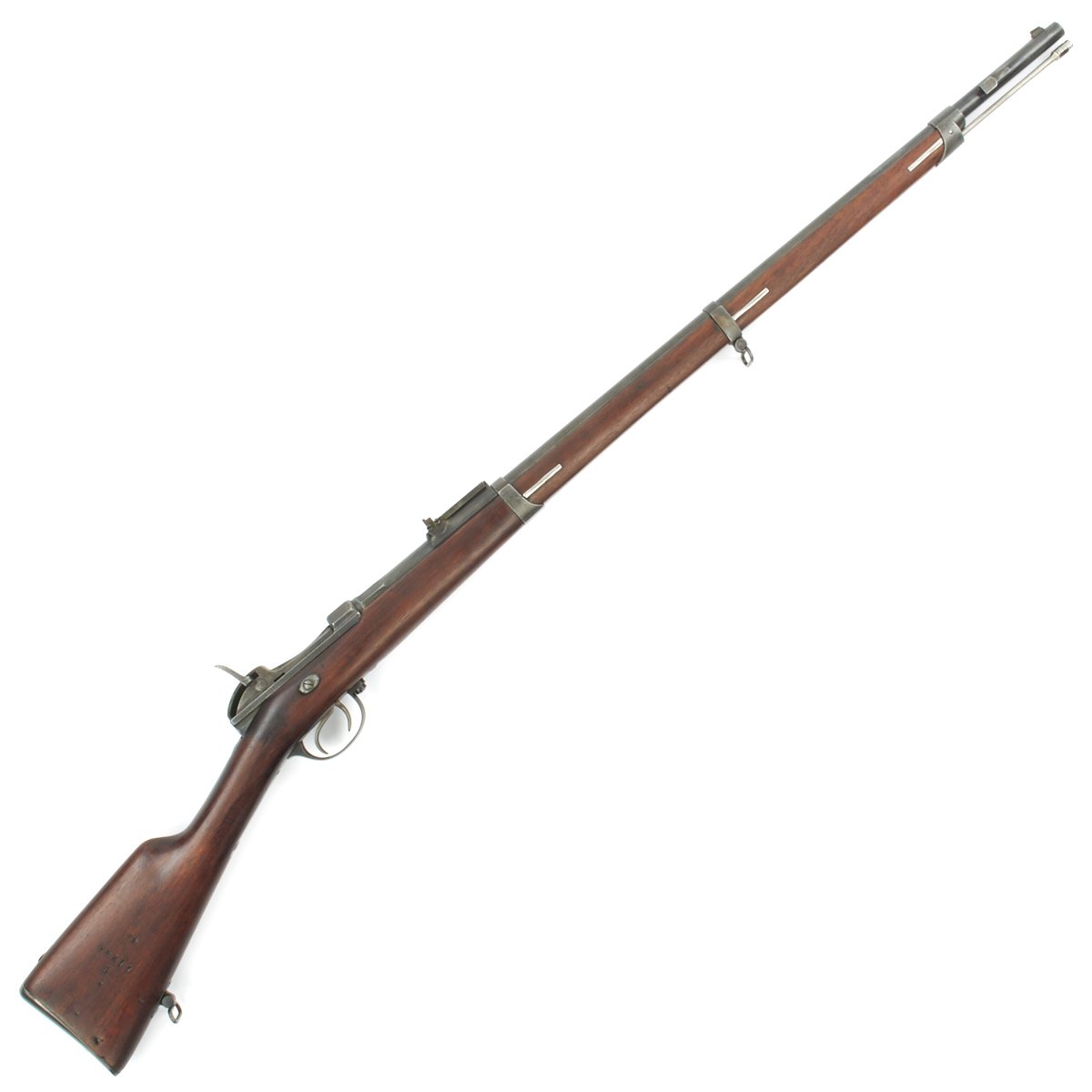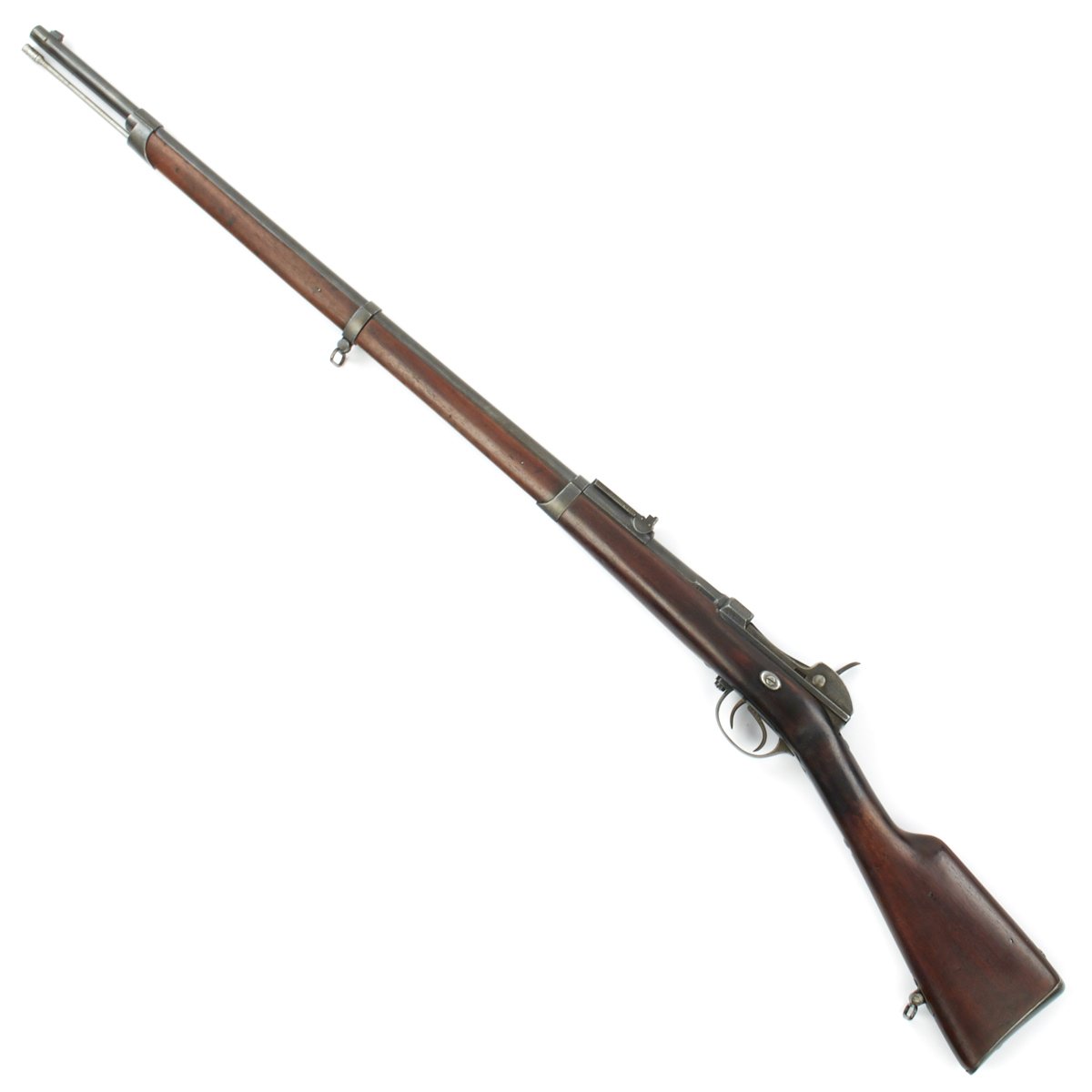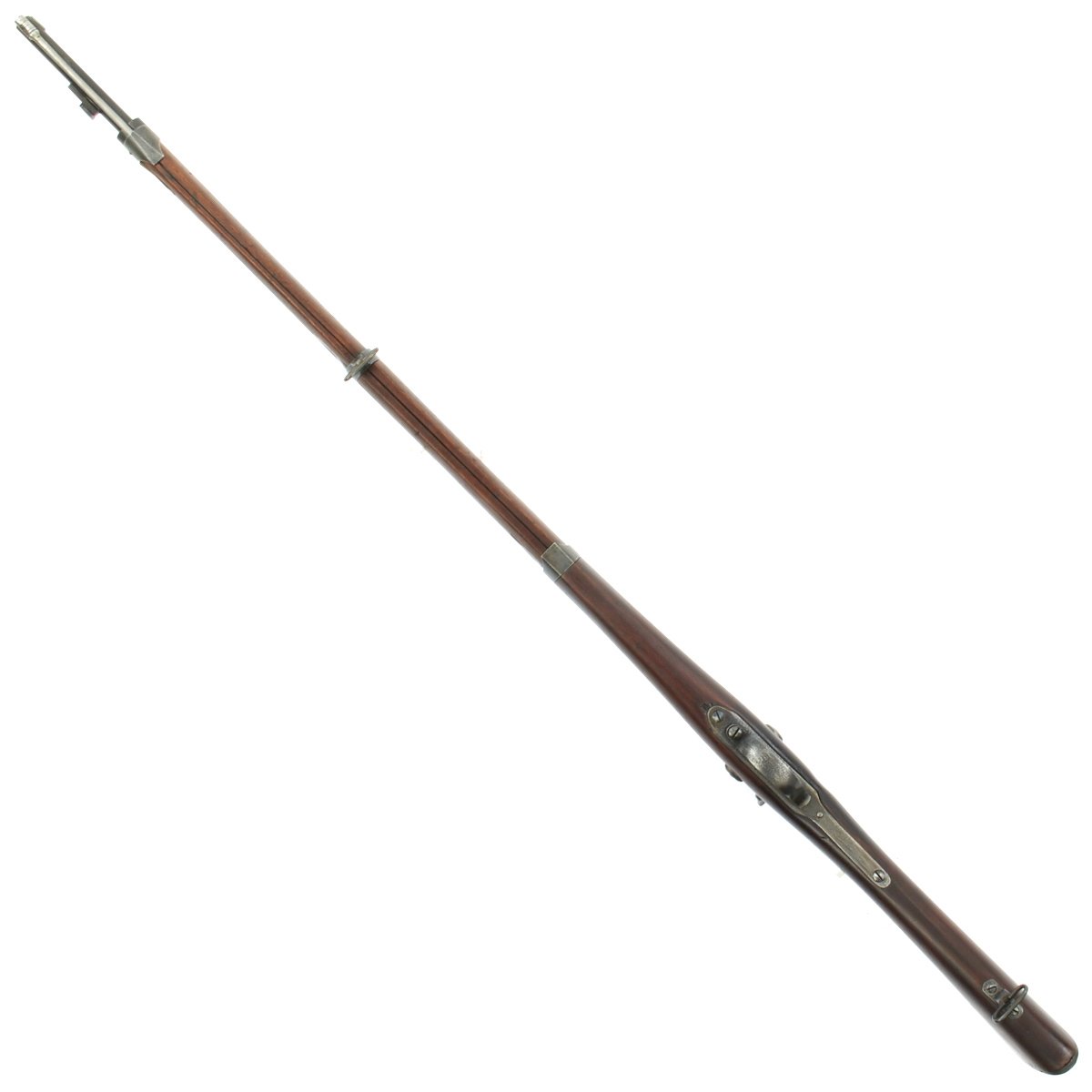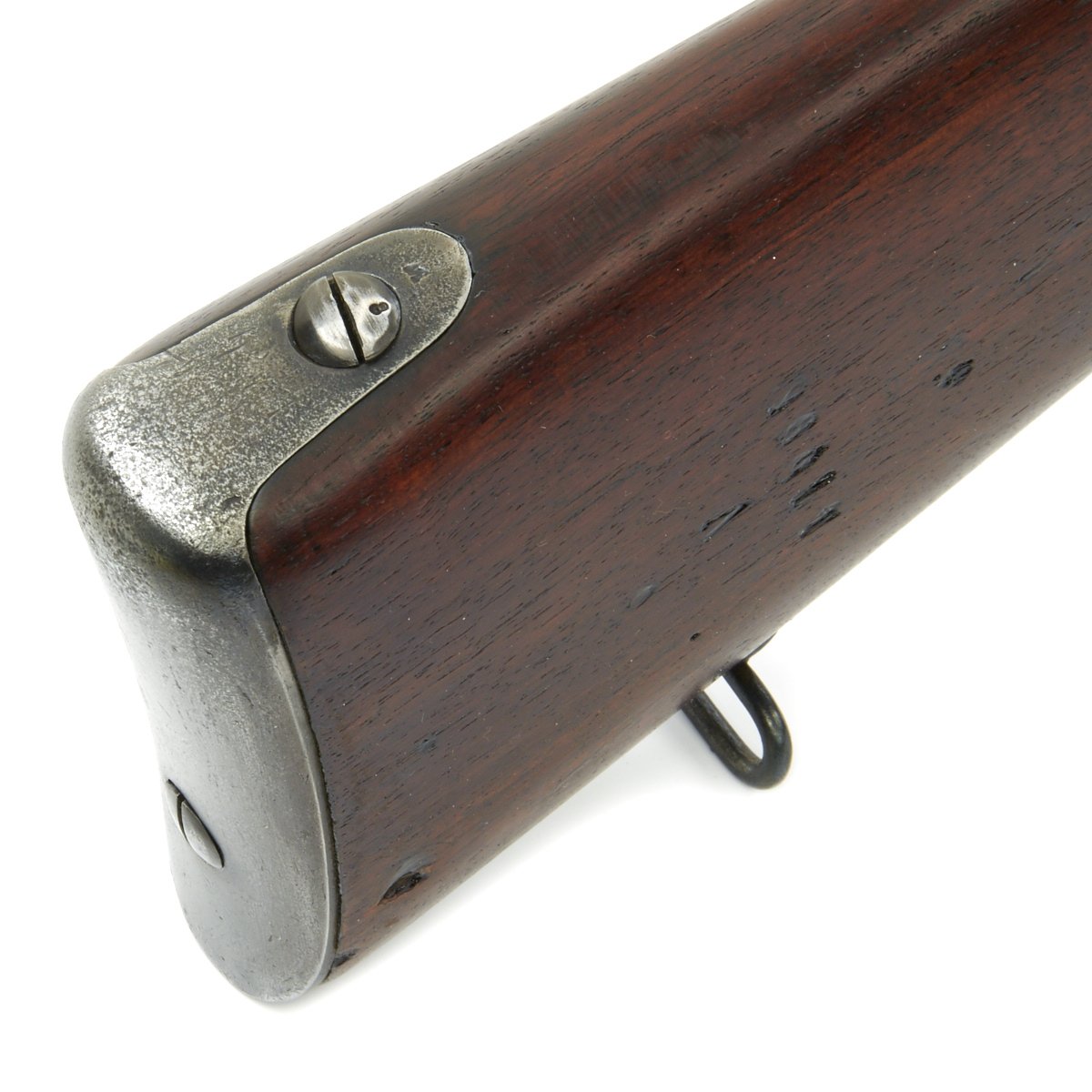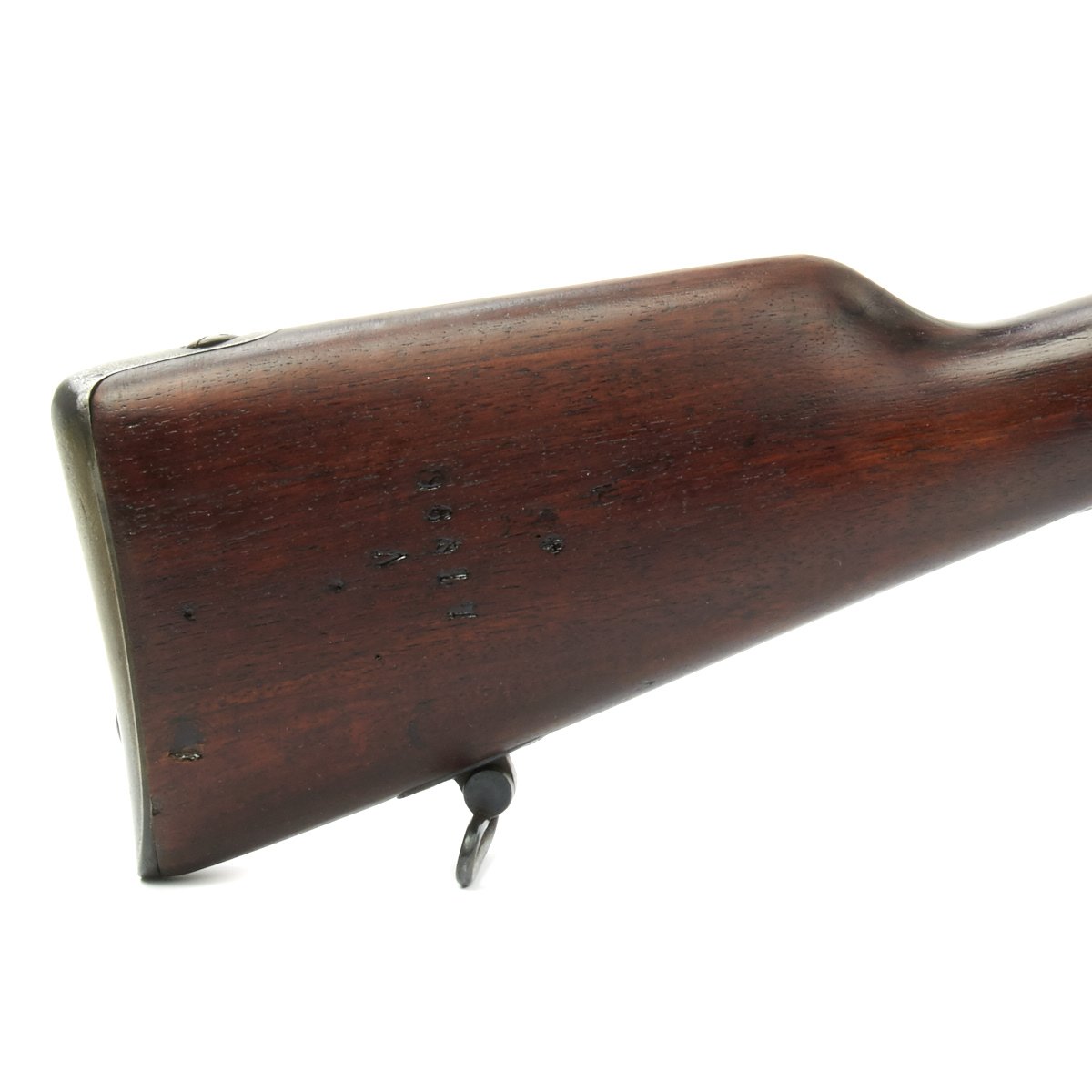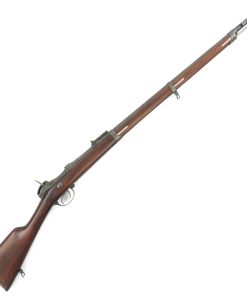Original Bavarian M-1869 Werder “Aptiertes” Single Shot Infantry Rifle in 11.15x60R Mauser – Serial 86617 Original Items
$ 1.995,00 $ 498,75
Original Item: One only. These Rifles are so very hard to find. Introduced April 18th 1869 and adopted as the Model 1869. Designed by JOHANN LUDWIG WERDER based on the Peabody and Martini Henry, the action of this rifle is truly fascinating.
Equipped with “Opposed” triggers and a cocking lever mounted above the action. The forward “backward” trigger lowers the sloping block like any Martini system. The Cocking lever, mounted in a block above the receiver to the rear cocks the Rifle and the standard trigger discharges the cartridge. In fact an extremely rapid process so much so that this rifle became known as the BAVARIAN BLITZ Rifle.
Bavaria had allied itself to Austria in the 1866 European war against Prussia but had then allied itself to Prussia for the 1870 Franco-Prussian War. After France’s swift defeat there followed the Confederation of German States in 1871, which ruled that all States should standardize on ammunition used by the Prussian Mauser 1871 Rifle, the ScharfePatronene M71 (11.15x60R Mauser). This resulted initially in the M1869 “Aptiertes”, a Werder re-chambered to adapt it to the Mauser ScharfePatronene M71 cartridge (that itself was based on a lengthened Werder case). The rear sight was also replaced with a mauser style sight at this time.
This simple re-chambering did not prove successful as the rifle/action/stock combination was not strong enough to handle the extra power of the M71 cartridge resulting in numerous cracked stocks. This example shows some repaired cracks on the wrist, and was not converted to the later M-1869 n.M, which replaced the entire barrel with one originally chambered for the M71 cartridge. These are easily recognized by a barrel knoxform that extends all the way from the breech to the rear sight.
In 1877 Bavaria then officially adopted the Mauser M71, and the all of the various Werder rifles were then relegated to Reserve Units and in some units saw service up until the First World War.
This particular M1869 “Aptiertes” Werder Rifle is really nice and appears to have matching Serial Numbers of 86617, located on the barrel, receiver, rear sight, and action. The trigger has a different number, and the stock number has been sanded down. The rear of the receiver is dated 1869 and 1872, indicating original production in 1869, and conversion 3 years later.
It has the correct Mauser style rear sight and short barrel knoxform, indicating it was converted to take the M71 cartridge, but was not later re-barreled to the n.M specification. The rifle comes with it’s original Chassepot/Gras type nose cap and ramrod. Clearly it saw little or no active service, as the bore is in very good condition, mostly bright, with clear lands and grooves.
The stock is also quite nice, with a lovely color and not much in the way of dents or scratches. Unlike most of these rifles, it did not have the stock cut off when brought home as a war trophy after WWI, as many were, so the forestock is intact. As mentioned before however, there is a repaired wrist crack, resulting from the increased power of the new cartridge.
A very rare German Infantry Rifle that is becoming exceedingly hard to find. Ready to display.
Specifications-
Year of Manufacture: 1869 – converted 1872
Caliber: 11.15x60R Mauser
Cartridge Type: Center Fire Cartridge
Barrel Length: 34.5 Inches
Overall Length: 51.5 Inches
Action type: Modified Falling-Block
Feed System: Single Shot
NOTE: International orders of antique firearms MUST be shipped using UPS WW Services (courier). USPS Priority Mail international will not accept these.
Fast Shipping with Professional Packaging
Thanks to our longstanding association with UPS FedEx DHL, and other major international carriers, we are able to provide a range of shipping options. Our warehouse staff is expertly trained and will wrap your products according to our exact and precise specifications. Prior to shipping, your goods will be thoroughly examined and securely secured. We ship to thousands clients each day across multiple countries. This shows how we're dedicated to be the largest retailer on the internet. Warehouses and distribution centres can be located throughout Europe as well as the USA.
Note: Orders with more than one item will be assigned a processing date depending on the item.
Before shipping before shipping, we'll conduct a thorough inspection of the items you have ordered. Today, the majority of orders will be delivered within 48 hours. The delivery time will be between 3-7 days.
Returns
The stock is dynamic and we cannot completely manage it because multiple stakeholders are involved, including our factory and warehouse. So the actual stock may alter at any time. It's possible that you may not receive your order once the order has been made.
Our policy is valid for a period of 30 days. If you don't receive the product within 30 days, we are not able to issue a refund or an exchange.
You can only return an item if it is unused and in the same state as the day you received it. You must have the item in its original packaging.
Related products
Uncategorized
Uncategorized
Uncategorized
Uncategorized
Uncategorized
Uncategorized
Uncategorized
Uncategorized
Uncategorized
Uncategorized
Angolan Rebel 1970s era 60mm Inert Display Mortar from Angolan Civil War Original Items
Uncategorized
Uncategorized
Uncategorized
Uncategorized
Uncategorized
Uncategorized
Uncategorized
Band of Brothers ORIGINAL GERMAN WWII Le. F.H. 18 10.5cm ARTILLERY PIECE Original Items
